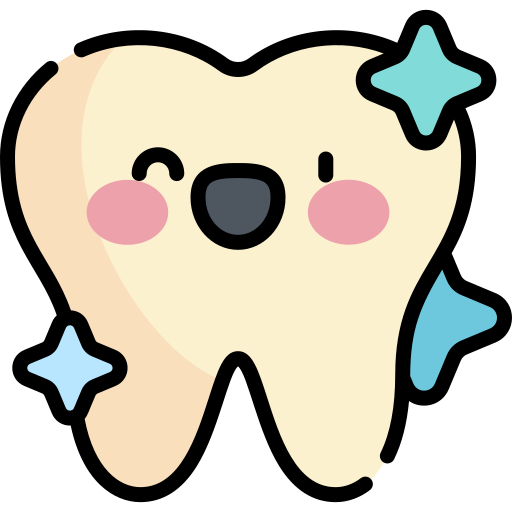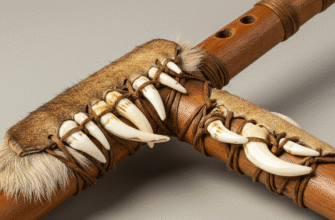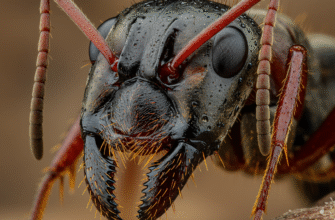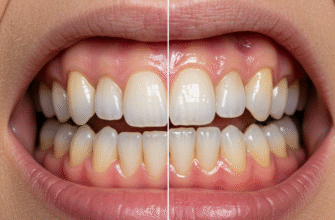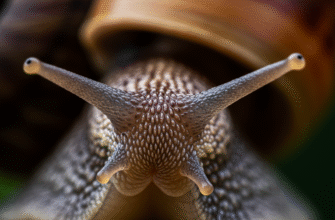Imagine a busy beaver, diligently felling a tree with an almost audible crunch, crunch, crunch. What’s the first thing you picture? Probably those remarkably large, bright orange front teeth. They’re not just a quirky fashion statement from Mother Nature; that distinctive hue is a dead giveaway to the incredible strength packed into every bite. These aren’t your average choppers. They are specialized tools, honed by evolution to perform a lifetime of demanding woodwork. This article delves into the fascinating science behind why a beaver’s enamel is orange and how this peculiar coloration contributes to the legendary resilience of their teeth.
The Beaver’s Lifestyle: A Need for Tough Teeth
Beavers are nature’s engineers, renowned for their ability to transform landscapes by building dams and lodges. Their entire existence revolves around wood. They gnaw down trees, sometimes impressively thick ones, for construction materials. They also consume the cambium layer, the soft inner bark of trees, as a primary food source, especially during winter. Think about the sheer mechanical stress involved in constantly cutting through dense wood fibers. It’s a relentless job that would quickly wear down or break ordinary teeth. Day in and day out, these incisors are subjected to immense pressure and abrasion. Without exceptionally robust dental gear, a beaver simply couldn’t survive, let alone thrive and reshape its environment with such industrious skill.
Anatomy of a Beaver’s Tooth
The stars of the show are the beaver’s four prominent incisors, two on the top jaw and two on the bottom. These aren’t static structures like human adult teeth. Instead, they are open-rooted, meaning they grow continuously throughout the beaver’s life. This is crucial because the constant gnawing naturally wears them down. If they didn’t keep growing, they’d soon be ground to nubs! Each incisor is composed of two main layers. The outer layer is the super-hard enamel, which we’ll focus on. Beneath that lies a softer, bonelike material called dentin. It’s the unique properties and arrangement of these two materials, particularly in the enamel, that give beavers their dental superpowers.
The Orange Signature: It’s All About Iron
So, why the striking orange color? The answer lies in a special mineral infusion: iron. Unlike human enamel, which primarily uses magnesium to help harden its crystal structure, beaver enamel incorporates significant amounts of iron. This iron isn’t just sprinkled on top; it’s integrated into the very chemical makeup of the enamel, specifically within the hydroxyapatite crystals that form the enamel’s matrix. The iron manifests as iron compounds, likely ferric oxide or ferric hydroxide, which are well-known for their reddish-brown or orangey pigments – think rust! This pigmentation is most prominent on the front surface of the incisors. It’s not a stain from their diet; it’s a fundamental component of their tooth structure, a built-in feature that gives them their characteristic color and, more importantly, their incredible durability.
More Than Just a Color: The Benefits of Iron
The inclusion of iron does far more than just give beaver teeth their distinctive look. It fundamentally alters the properties of the enamel, making it significantly harder and more resistant to mechanical stress. Iron atoms, integrated into the enamel’s crystalline lattice, strengthen the bonds between molecules. This makes the enamel less prone to chipping and cracking under the immense pressures of gnawing through wood. Furthermore, iron-rich enamel is also more resistant to acid. While beavers aren’t swigging sugary sodas, their diet of bark and plant material can create an acidic environment in the mouth. The iron helps protect the teeth from demineralization and decay, a vital advantage for an animal whose livelihood depends entirely on its dental health. This enhanced hardness and acid resistance are key to the longevity and effectiveness of their natural tools.
Scientific studies have confirmed that the presence of iron in beaver enamel significantly increases its hardness. This specialized enamel is also more resistant to acid attack compared to enamel that relies on magnesium or fluoride for strength. This natural engineering provides beavers with incredibly durable and effective cutting tools.
Nature’s Chisel: The Self-Sharpening Mechanism
Perhaps the most ingenious aspect of beaver dental engineering is their self-sharpening mechanism. This is where the difference in hardness between the iron-rich front enamel and the softer underlying dentin (and the enamel on the back of the tooth, which has less iron) comes into play. The super-hard, orange-pigmented enamel is predominantly found on the front (anterior or labial) surface of the incisors. The back (posterior or lingual) surface of the tooth is primarily composed of softer dentin, or enamel with significantly less iron fortification. As the beaver gnaws on wood, these two materials wear down at different rates. The softer dentin on the back wears away more quickly than the incredibly tough iron-infused enamel on the front. This differential wear constantly creates and maintains a sharp, chisel-like edge on the tooth, with the hard enamel forming the cutting blade. It’s a brilliant piece of natural engineering, ensuring their tools are always in prime condition for the next tree-felling task, without ever needing a trip to a beaver dentist for a sharpen!
Not Just Beavers: Iron’s Role in Other Gnawers
Beavers aren’t the only members of the animal kingdom to sport these iron-fortified, often pigmented, incisors. Many other rodents that engage in significant gnawing behavior have evolved similar dental adaptations. For example, animals like nutria (coypu), porcupines, and various species of rats and mice also exhibit yellowish, orange, or reddish pigmentation on their incisors due to the presence of iron in their enamel. This convergence suggests that incorporating iron into enamel is a highly effective evolutionary strategy for creatures whose survival depends on powerful and durable teeth for processing tough plant materials or other hard substances. It’s a testament to how nature often arrives at similar solutions to similar challenges across different species, a concept known as convergent evolution. The specific shade and intensity of the color can vary, but the underlying principle of iron reinforcement remains a common theme among these expert gnawers.
Why Not Human Teeth?
Given the benefits, one might wonder why human teeth aren’t orange and iron-clad. Our evolutionary path and dietary needs have been vastly different. Early humans and their ancestors relied on a more varied diet that didn’t typically involve felling trees with their teeth. While our enamel is incredibly strong, it’s optimized for crushing, grinding, and tearing a broader range of foods. We developed tools – first stone, then metal – to perform tasks like cutting wood, rather than evolving specialized teeth for it. Our enamel contains magnesium, which also contributes to hardness, but the selective pressures for the extreme hardness provided by iron, as seen in beavers, simply weren’t part of our evolutionary journey. Plus, aesthetically, bright orange teeth might not have been a winning trait in human social structures!
The beaver’s orange teeth are a striking visual cue to a remarkable biological adaptation. That vibrant color, a direct result of iron embedded within the enamel, is the secret behind their incredible strength and resilience. This iron fortification not only makes the enamel exceptionally hard and resistant to acid but also facilitates a brilliant self-sharpening mechanism, ensuring their incisors remain effective chisels throughout their lives. It’s a perfect example of how an animal’s physical characteristics are intricately linked to its lifestyle and environment. So, the next time you see footage of a beaver industriously working on a dam, take a moment to appreciate the sophisticated natural engineering behind those powerful, orange tools – a true testament to nature’s ingenuity. They are not just teeth; they are finely tuned, continuously growing, self-sharpening instruments of survival.
